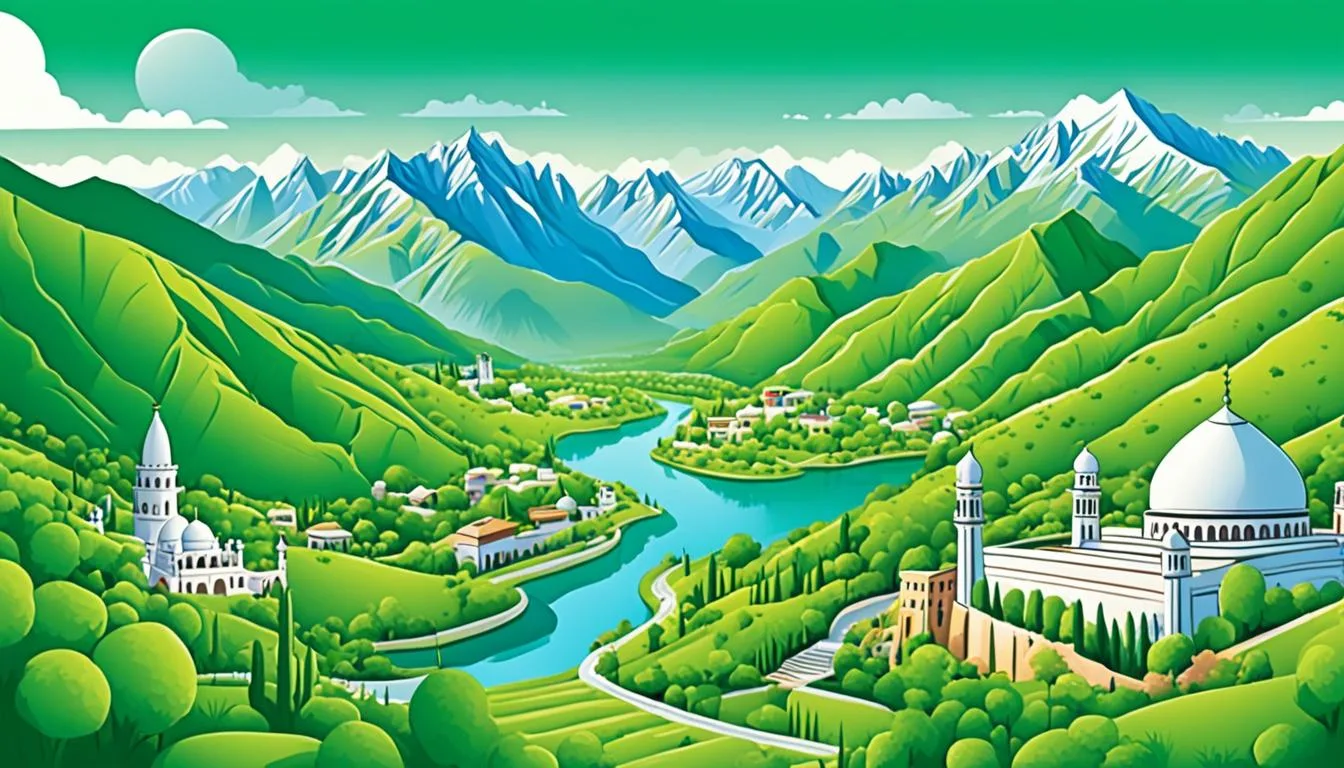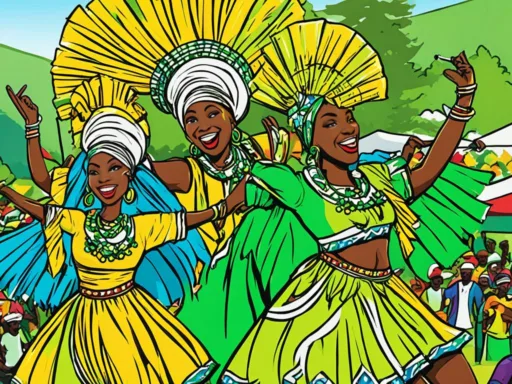Picture stitched tapestries of mountain majesties and ancient ruins whispering tales of bygone eras. Have you ever wondered what the best time to visit Pakistan is to bask in its storied splendor and alpine wonders? Beyond the stunning visuals of K2 or the echoes of history at Moenjodaro, the timing of your visit can profoundly alter your travel experience. Pakistan’s vast geographical diversity demands a thorough understanding of its climatic idiosyncrasies to capture the essence of its top attractions. Our travel guide embarks on a journey to unveil the optimal travel times, ensuring your memories of Pakistan are not just pleasant but extraordinary.
Dive into our curated repository of Pakistan travel tips and travel recommendations for Pakistan, designed to navigate you through the vibrant bazaars of Punjab or the serenity of Hunza with ease. Whether you’re a history aficionado eager to tread through dynastic footprints or an adventure seeker looking to conquer mountain trails, knowing when to visit can make all the difference. Join us as we decode the seasons to reveal the secret to a flawless Pakistani adventure.
Key Takeaways
- Uncover the ideal months to experience the northern mountains and southern historical sites.
- Decipher the varied climates that define the best time to visit Pakistan.
- Gain insights on how to navigate cultural experiences and outdoor adventures harmoniously.
- Learn about the influence of Islamic festivals and monsoon seasons on your travel planning.
- Access strategic travel recommendations for Pakistan tailored to different regions.
Exploring the Diverse Climates of Pakistan for Optimal Travel Planning
Embarking on a journey through Pakistan requires insights into its complex weather tapestry—an essential piece for any traveler’s itinerary. From the southern plains, where the sun bakes the earth, to the frigid heights of the northern mountains, understanding the regional climate is key to a fulfilling exploration of this diverse land. Here’s an in-depth Pakistan weather guide to help plan your ideal time to travel.
Pakistan Weather Guide: From Southern Heat to Northern Chill
Whether you’re venturing through bustling cities or ancient ruins, the weather plays a pivotal role in determining the richness of your Pakistani travel adventure. Sindh’s winter, akin to a gentle European summer, and the blossoming spring of Punjab create a traveler’s paradise during the November to March timeframe, appealing for those seeking a warm escape. Meanwhile, the northern regions transform with the spring’s thaw, revealing nature’s vibrant palette.
Climatic Variations Influencing Your Itinerary
Climatic variations are not just a mere curiosity but a fundamental aspect to be considered while planning your journey. The seamless summer drive along the Karakoram Highway and the accessible historical sites in peak tourist season Pakistan suggest the April to October period as the window of opportunity for northern explorations, juxtaposing the preferable winter wanderlust in the heart of Sindh and Punjab’s archaeological treasures.
Understanding Regional Weather Patterns for Historical Sites
The profound wisdom in grasping Pakistan’s climate ranges from practical travel tips to ensuring a trip unmarred by weather-induced challenges. Harsh winters may cloister northern beauty, yet give way to postcard-worthy settings, while the pleasant winters in the south cater to a sublime cultural quest. Monsoon months, though, can bring about an unexpected twist, especially in the south, during July and August, making a well-timed visit imperative.
| Region | Ideal Travel Period | Climate Characteristics | Travel Recommendations |
|---|---|---|---|
| Northern Pakistan | April to October | Clear skies, temperate weather | Plan for mountain treks and the Karakoram Highway |
| Southern Pakistan | November to March | Warm winters, comfortable for exploration | Visit archaeological sites and cultural landmarks |
| Punjab in transition | March to April | Blossoming spring, mild heat | Observe the natural beauty, avoid crop burning haze in December |
With this handy Pakistan climate overview, you are well-equipped with travel recommendations for Pakistan, ensuring a visit that aligns with the seasonal charm and delights the country has to offer.
Best Time to Visit Pakistan: Balancing Comfort and Adventure
Discovering the ideal time to go to Pakistan revolves around a mixture of climatic sweet spots and cultural highlights. With a Pakistan weather guide in hand, travelers can narrow down the periods that offer clear skies for mountain treks and comfortable temperatures for urban explorations.
For trekkers, the allure of Pakistan’s highlands beckons most strongly from May to September, when clear skies complement the natural beauty of the region. The best time to visit Pakistan for trekking is generally during the summer months when the weather is favorable for outdoor activities. The valleys come alive with vibrant hues, and the air is crisp and invigorating. On the other hand, those looking to delve into Pakistan’s rich cultural tapestry might find the cooler months from November to February more to their liking. With ideal weather conditions, historical sites in the urban centers become accessible havens of discovery.
It’s worth noting that religious festivals and local events can significantly affect your travel experience in Pakistan. Ideal time to go Pakistan might shift with the varying dates of Islamic festivals, which can influence the availability of accommodations and transport options. Whether you seek the thrill of the adventure or the serenity of cultural sites, planning around these events is key:
- Check local calendars for polo festivals, particularly in the northern areas.
- Be aware of the shifting dates for Islamic holidays like Eid ul-Fitr and Eid ul-Adha.
- Consider the milder weather of spring or autumn if your itinerary includes both treks and cultural sites.
| Season | Trekking Conditions | Cultural Exploration |
|---|---|---|
| Spring (March to May) | Valleys in bloom, ideal for beginning trekkers. | Transitioning weather, conducive for longer urban adventures. |
| Summer (June to August) | Optimal time for high-altitude treks, clear skies. | Hotter climate, better spent in the northern elevations. |
| Autumn (September to November) | End of the trekking season with cooler temperatures. | Mild weather facilitating historical site visits and local events. |
| Winter (December to February) | Most highland treks inaccessible due to snow. | Best for southern cultural sites, with pleasant daytime temps. |
Planning your trip around these factors can ensure that your visit to Pakistan is as memorable for its comfortable sojourns as it is for its adventures. With this guide, map out a journey that aligns closely with your expectations, and immerse yourself in the unparalleled diversity that Pakistan has to offer.

The Cultural Richness of Pakistan: Best Seasons for Urban Exploration
Discovering the cultural richness of Pakistan is a venture best undertaken during specific times of the year. The mild winter months reveal the ideal conditions for exploring the vibrant tapestry of Pakistan’s history and modern-day spectacle, offering comfort and accessibility for travelers.
Wintertime Wonders: Discovering Sindh and Punjab’s Heritage
For those interested in the historical breadth of Sindh and Punjab, the best travel recommendations for Pakistan advise visiting during winter. The lower temperatures facilitate enjoyable excursions to major sites such as the ruins of Mohenjo-daro, the Lahore Fort, and the colorful shrines of Sufi saints. Sojourners can embark on a historical odyssey, navigating through time and culture as they wander the cooler, less crowded markets and heritage sites.
Timing Your Visit Around Islamic Festivals and Events
One of the most vibrant aspects of Pakistan travel tips includes the timing of visits around Islamic Festivals in Pakistan. Observances such as Ramzan, Eid-ul-Fitr, Ashura, and Eid-ul-Azha offer immersive experiences into the country’s religious and communal norms, where cities come alive with festivities. However, these occasions can also lead to busy streets and a pause in regular services, which should be factored into travel planning.
Weather and Its Impact on Enjoying Pakistan’s Urban Landscapes
Being equipped with a Pakistan weather guide is crucial when your itinerary includes exploring urban centers. The summer months can be sweltering, particularly in southern cities like Karachi and Multan, making winter visits all the more appealing. Travelers should also be mindful of the monsoon season, as the rains can dramatically affect transport and access to attractions.
| Season | Region | Weather | Cultural Activities |
|---|---|---|---|
| Winter | Sindh & Punjab | Mild and Pleasant | Heritage Sites, Sufi Festivals |
| Spring/Summer | Southern Cities | Hot and Humid | Limited Due to Heat |
| Monsoon | South Pakistan | Wet, Potential Flooding | Urban Centers Affected |
Amongst the top attractions in Pakistan, urban landscapes possess a unique charm. With adequate planning, considering weather and cultural events, travelers can enjoy these spaces in comfort, capturing the essence of Pakistan’s urban beauty and heritage. Below is an image that perfectly encapsulates the cultural vibrancy one might experience while exploring these regions.
Mountain Treks in Pakistan: A Guide to Navigating the Best Trails
For those drawn to the magnificence of mountainous terrains, the ideal time to go to Pakistan is when the Summer’s embrace warms the trails and the skies declare the season of adventure. Trekking in Pakistan is more than a passing pleasure; it’s an immersion into landscapes sketched by nature’s own hand. As you plan your journey, let these travel recommendations for Pakistan prepare you for an experience carved in the peaks of grandeur.
Journeying Through the Karakoram: A Summer Affair
The best time to visit Pakistan for a trek through the lofty Karakoram is during the blissful months of May to September. Gilgit Baltistan opens up with its emerald valleys and crystalline skies, perfect for making the ascent to watch the sunrise over K2 – a truly elevated experience among the top attractions in Pakistan.

Embarking on Himalayan and Hindukush Adventures
The contrast of the lush Himalayan forests and the unyielding terrain of Hindukush beckons adventurers from far and wide. In the cushion of summer, embark on pathways that meander through verdant meadows and over ancient, hushed passes like Babusar and Shandur, finding solace in the heart of nature’s own sanctuaries.
Seasonal Consideration for Trek Enthusiasts
Seasonal timing is central to your trekking itinerary as it determines access to various zones and the necessity for permits. While summer offers more flexible trekking opportunities, remember that the Pakistan travel tips always include checking regulations and preparedness for the myriad trails that await your footsteps.
| Region | Best Time to Visit | Trekking Highlights |
|---|---|---|
| Karakoram Range, Gilgit Baltistan | May – September | Majestic views of K2, Cool evenings |
| Himalayas | June – August | Lush pine forests, Blooming meadows |
| Hindukush | July – September | Challenging terrains, Serene passes |
In concluding, your quest for the best time to visit Pakistan for mountain treks leads invariably to the heart of summer, granting you passage through realms where beauty and challenge coalesce. Embrace these travel recommendations for Pakistan and the transformative adventures that await beneath the watchful gaze of towering peaks.
Conclusion
In summary, selecting the Best Time to Visit Pakistan is directly tied to your individual travel preferences. Whether your aim is to immerse yourself in the rich tapestry of local culture or to conquer the heights of rugged terrain, the country’s diverse regions offer vast opportunities throughout the year. While the northern expanse welcomes trekkers during the summer with cool evenings and clear trails, the southern lands invite history enthusiasts in winter, with its warm embrace ideal for uncovering ancient marvels.
The Pakistan climate overview serves as a crucial guide to plan your journey, providing awareness of how seasonal nuances influence accessibility and enjoyment of Pakistan’s diverse attractions. As you weigh your options, keep in mind the importance of timing your excursions with local events and festivals. Such cultural occurrences not only add value to your experience but also reflect the heartbeat of this nation’s vibrant traditions.
To facilitate a journey that meets your expectations, integrating these insights with comprehensive Travel recommendations Pakistan can help tailor a trip that best fits your desires. Considering both the climatic conditions and the cultural calendar can ensure a seamless blend of comfort and discovery. Whether amidst the high-altitude splendor or within the historical sanctums of the south, Pakistan’s landscapes are poised to offer an unrivaled journey of challenge and wonder.
FAQ
What is the best time to visit Pakistan for historical site exploration?
The ideal time for exploring historical sites, particularly in the southern provinces of Sindh and Punjab, is during the cooler winter months from November to March, when the weather is more conducive to outdoor activities.
When is the peak tourist season in Pakistan’s northern mountain regions?
The peak tourist season in the northern areas, especially in regions like Gilgit-Baltistan and along the Karakoram Highway, is from April to October, offering clear skies and pleasant weather for trekking and sightseeing.
Can you explain the climatic variations across Pakistan and how they might affect travel plans?
Pakistan’s climate varies greatly from the hot southern plains to the freezing northern mountains. Summers are sweltering in the south while mild in the north. Winters are the reverse, with warmer conditions in the south and snow in the north. Travelers should plan their visit according to these variations to ensure comfort and accessibility to different areas.
What should travelers expect regarding weather when visiting Pakistan’s historic sites?
When visiting the historical sites in the south, expect warm winters perfect for exploration but prepare for high temperatures during the spring and summer months. Additionally, monsoon rains in July and August can lead to flooding, potentially impacting travel plans.
How do Islamic festivals affect travel in Pakistan?
Islamic festivals, which follow the lunar calendar, can impact restaurant openings and transportation due to nationwide celebrations. It’s a chance to experience Pakistan’s culture deeply, but visitors should be prepared for alterations in usual services.
When is the ideal time for mountain treks in the Karakoram and Himalayas in Pakistan?
For trekking in the Karakoram and Himalayan ranges, the summer months from May to September are best. The weather is favorable with less precipitation, making it an excellent time for high-altitude adventures.
Are there any travel tips for tourists looking to visit both Pakistan’s cultural sites and its mountain areas?
To experience both the cultural richness and natural beauty of Pakistan, plan your visit around October and November. These months offer the bridge between the mild climate for urban exploration and the end of the good trekking conditions in the mountains.
What are some of the top attractions to consider when visiting Pakistan?
Top attractions in Pakistan include the ancient archaeological ruins like Moenjodaro, stunning mountain landscapes like Hunza Valley, cultural and spiritual hubs such as the Sufi shrines in Sindh, and architectural marvels like Lahore’s Badshahi Mosque.
How does weather influence trekking experiences in Pakistan’s Himalayas and Hindukush?
The Himalayas and Hindukush offer lush landscapes during the summer, the best season for trekking due to comfortable temperatures and less precipitation. However, it’s essential to be aware of any permits needed for specific regions.
Are there any specific travel recommendations for visiting Pakistan during the monsoon season?
During the monsoon season, typically in July and August, it’s wise to plan for the possibility of transportation delays and choose destinations less affected by rain. Northern areas may offer better conditions for travel as the south experiences the bulk of the monsoon impact.






